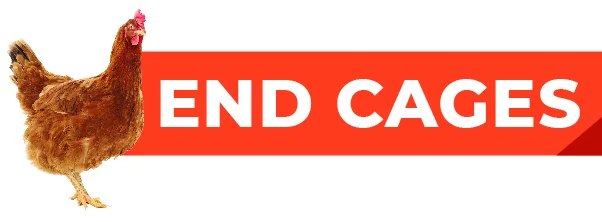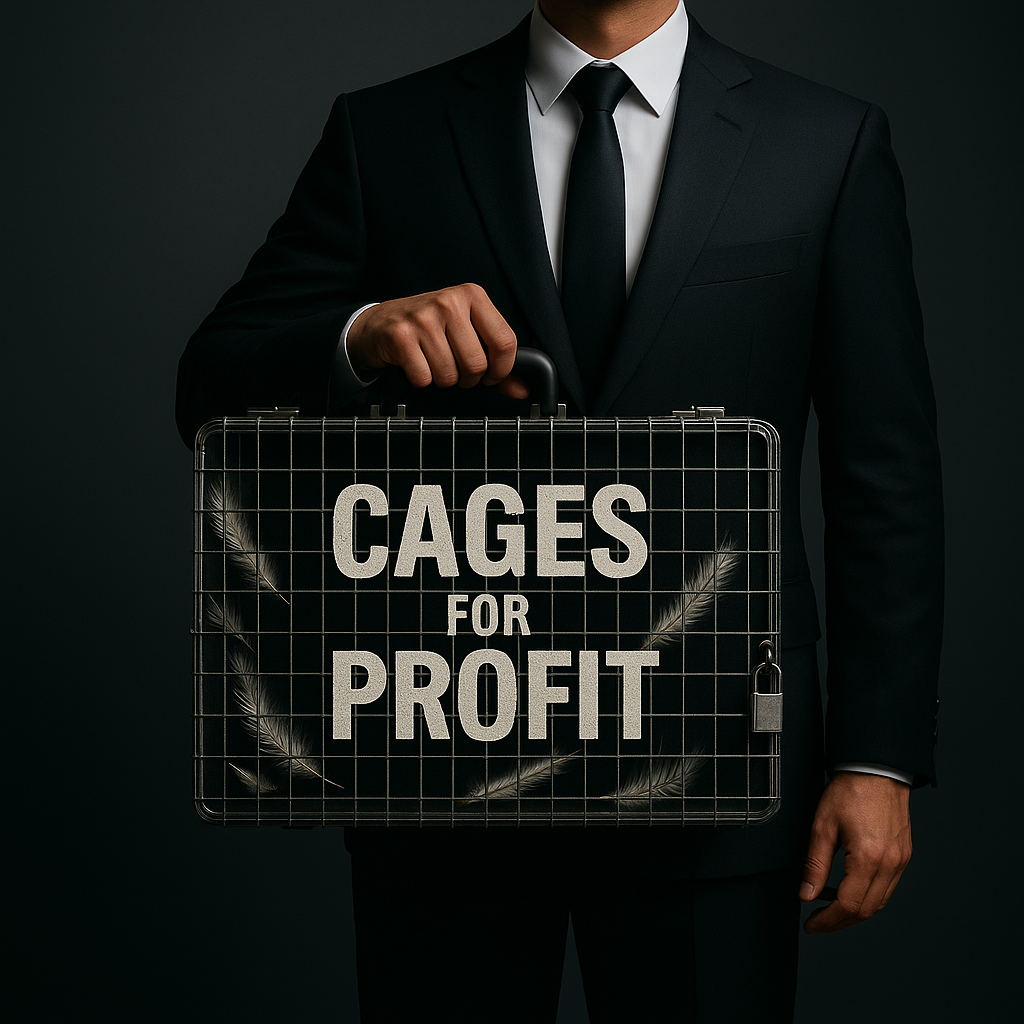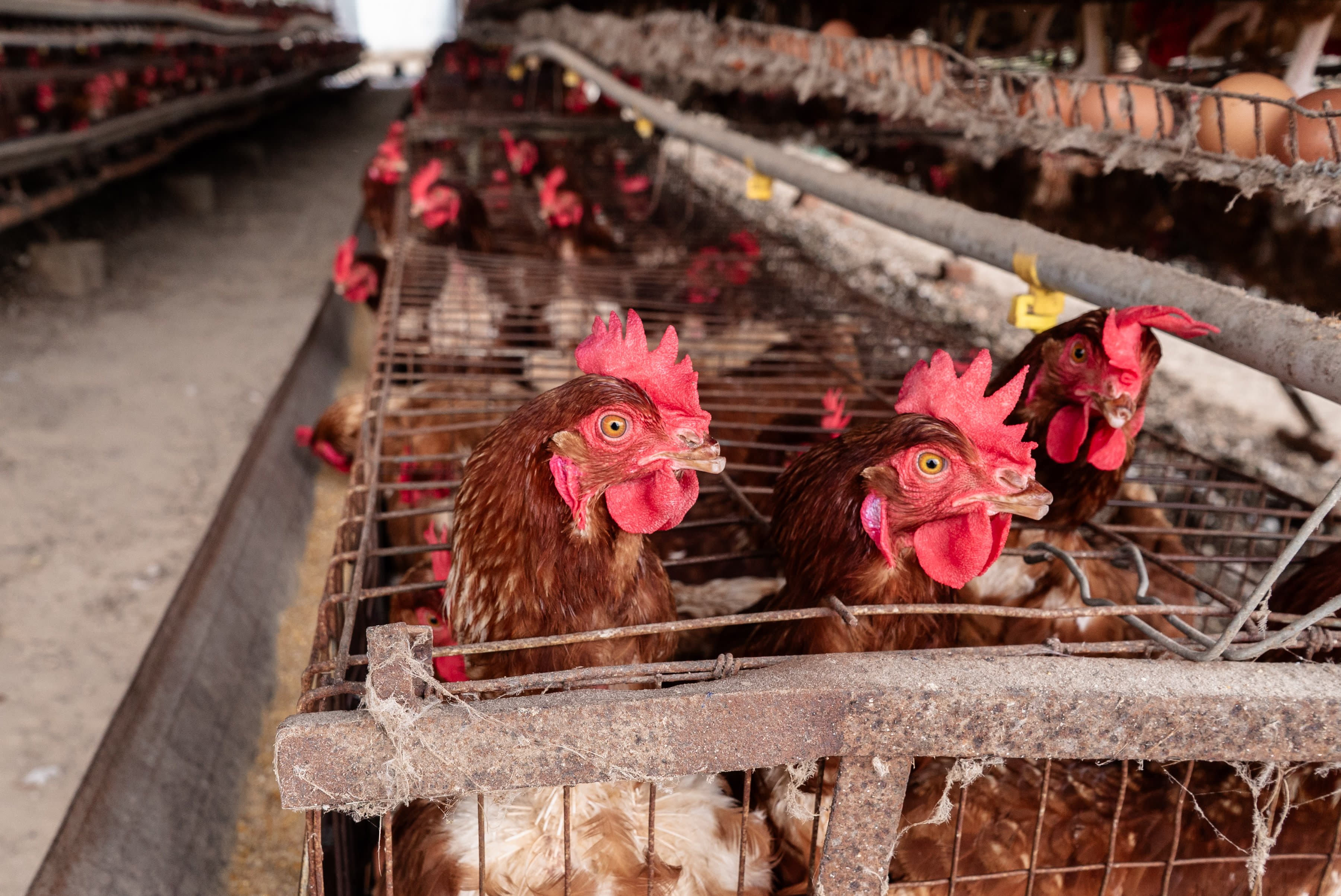




When a food company pledges to source only cage-free eggs in its supply chain, that’s cause for celebration. But when those promises are not met, every unfulfilled pledge means continued suffering for countless chickens. And that cruelty cannot continue.

Imagine standing in a tight enclosed space with four to ten of your peers, your feet painfully twisted around wire flooring. You want to stretch, but you can’t. There’s no sunlight, no fresh air, and your body is aching and exhausted. For millions of chickens worldwide, this is their reality.
Life in a cage is no life for a chicken. Globally, egg-laying hens in our food system are living in agony in cramped, constrictive cages. They can’t move freely, spread their wings, or enjoy a dust bath. Worse, they endure injuries from their cages like torn feathers, broken bones, or painfully mangled feet.
So when a company (especially one with a significant presence in the food industry) announces it’ll eliminate cruel cages in its supply chain, that’s a victory worth celebrating—but it’s also just the beginning.
Following through on a cage-free commitment, and openly sharing the company’s progress and plan to eliminate cages, is the most important part of the process. Unfortunately, some companies that make a cage-free pledge are not keeping their promises, leaving consumers in the dark and countless chickens in constant misery.
What is cage-free accountability?
With consumers demanding an end to cruel and abusive treatment of chickens, many food companies have publicly committed to sourcing only cage-free eggs. This growing momentum toward a more compassionate future for chickens may spark a feeling of hope, and with good reason. Even better, a recent report from the Open Wing Alliance (OWA) states that 89% of companies with 2023 or earlier deadlines are following through with those cage-free commitments.
But how do we know? Companies that make commitments to eliminate cages are urged to publicly report progress and publish their plan for when, and how, they intend to meet their goals. By doing so, those companies provide accountability and transparency to their investors, conscious consumers, and animal advocates alike.
Why is cage-free accountability important?
Without accountability, chickens in the supply chain continue to suffer. Globally, around 4 billion hens are living in little cages with wire digging into their feet, catching and tearing their feathers, and restricting their ability to move freely. As of September 2024, about 178.9 million hens (approximately 58.3%) in the US live in battery cages, which are roughly the size of a filing cabinet drawer. The hard truth is that chickens in these cages are suffering. So when a company commits to making a change for chickens, it’s important to hold them to it. For hundreds of millions of chickens worldwide, accountability can make all the difference.
Companies need to deliver on their promises
While 89% of food companies with deadlines in 2023 or earlier are making good on their cage-free commitments, a number of others are either not reporting progress or have reneged on their commitments completely. At the moment, food companies that need to report on their progress and fulfill their commitment to sourcing only cage-free eggs in their supply chains include:
Consumers and animal advocates are working together to send these companies a strong message that the time for change is now. Chickens are living in agony and cannot continue to wait for a change that may not be coming. As we demand an end to the use of battery cages, we hope companies begin to understand that it’s never okay to profit off of animal abuse.
What would a chicken’s life look like outside of a cage?
Chickens are quirky, personable, and funny—just like you and me. With hundreds of breeds worldwide, chickens also have an array of colors, feathers, and characteristics that make them stand out from one another.
While chickens raised to produce eggs or meat endure a horrific existence, chickens raised as companions might enjoy mingling with their feathered friends, grazing in the grass after a rainstorm, or snacking on cool watermelon on a hot day. They can stretch their wings, enjoy a dust bath, and feel the warmth of the sun.
Egg-laying hens in the food system, however, are not yet living to those standards, and the “cage-free” label on an egg carton can be deceiving. Cage-free means that instead of living in cages, egg-laying hens are housed in large windowless sheds with lots of other chickens. For hens in the supply chain, cage-free represents a shift for the better—but better still isn’t quite “best.”
How can I make a difference?
Food companies may imagine that making a public promise is enough, regardless of any measurable change on its part. But you and I see the plight of chickens and know that we must hold corporations accountable to their cage-free commitments.
Together, we can send a powerful message to companies that are failing to make progress on their cage-free promises—a message that lets them know we are here, we are relentless, and we will not give up until chickens are free from cruel battery cages.
Join consumers around the world in letting corporations know it’s time to make meaningful progress on their cage-free commitments today.








